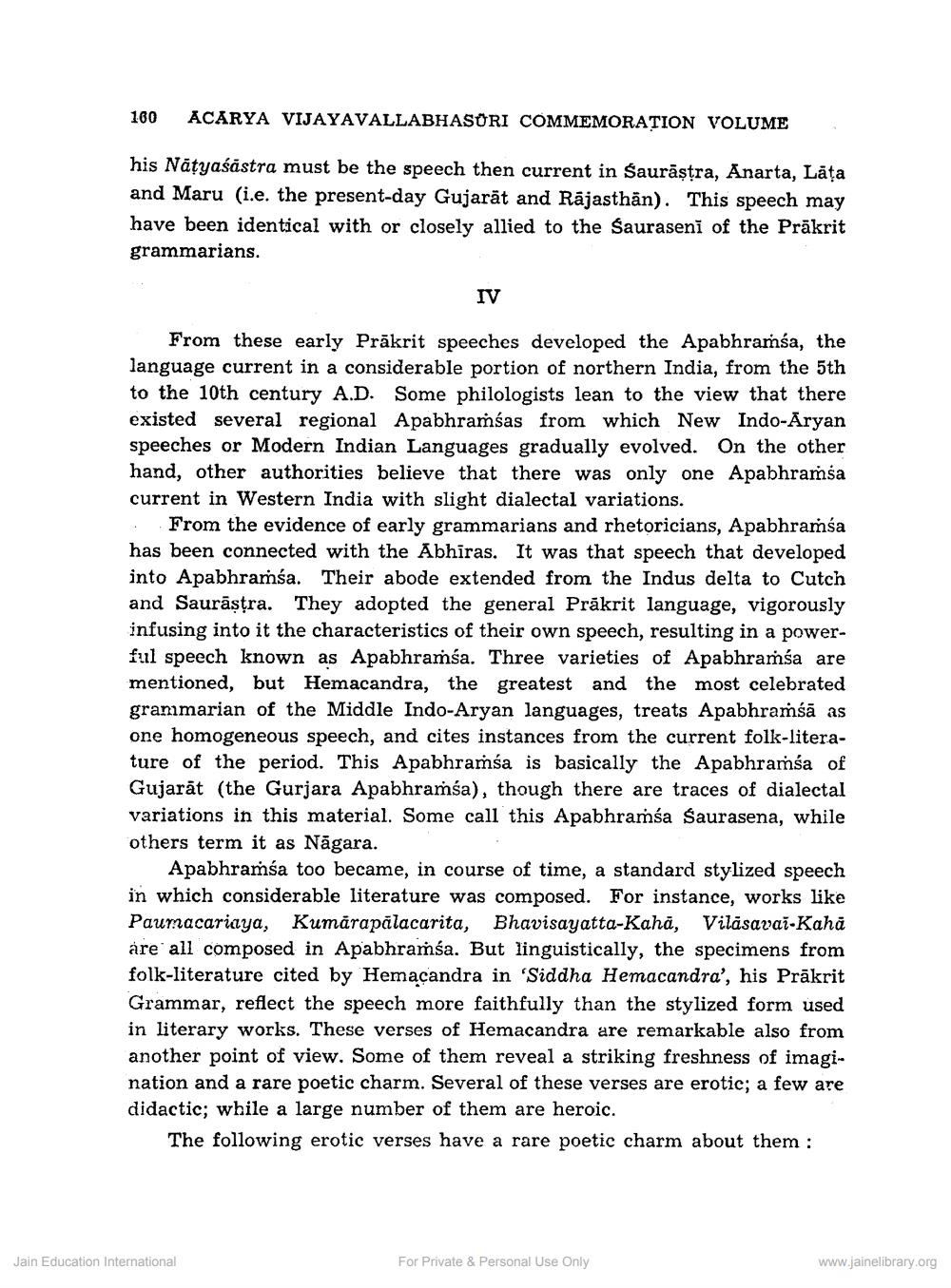Book Title: Historical Outline of the Languages of Western Indian Author(s): K B Vyas Publisher: Z_Vijay_Vallabh_suri_Smarak_Granth_012060.pdf View full book textPage 4
________________ 100 ACARYA VIJAYAVALLABHASORI COMMEMORATION VOLUME his Nātyaśāstra must be the speech then current in Saurāstra, Anarta, Lăța and Maru (i.e. the present-day Gujarat and Rājasthän). This speech may have been identical with or closely allied to the Sauraseni of the Präkrit grammarians. IV From these early Prākrit speeches developed the Apabhraṁsa, the language current in a considerable portion of northern India, from the 5th to the 10th century A.D. Some philologists lean to the view that there existed several regional Apabhraíśas from which New Indo-Aryan speeches or Modern Indian Languages gradually evolved. On the other hand, other authorities believe that there was only one Apabhraíša current in Western India with slight dialectal variations. .: From the evidence of early grammarians and rhetoricians, Apabhrassa has been connected with the Abhiras. It was that speech that developed into Apabhraíśa. Their abode extended from the Indus delta to Cutch and Saurāstra. They adopted the general Prākrit language, vigorously infusing into it the characteristics of their own speech, resulting in a powerful speech known as Apabhramsa. Three varieties of Apabhraíśa are mentioned, but Hemacandra, the greatest and the most celebrated grammarian of the Middle Indo-Aryan languages, treats Apabhramśā as one homogeneous speech, and cites instances from the current folk-literature of the period. This Apabhraíśa is basically the Apabhraṁsa of Gujarāt (the Gurjara Apabhramśa), though there are traces of dialectal variations in this material. Some call this Apabhramsa Saurasena, while others term it as Nāgara. Apabhramśa too became, in course of time, a standard stylized speech in which considerable literature was composed. For instance, works like Paumacariaya, Kumārapālacarita, Bhavisayatta-Kahā, Vilasavai-Kahā are all composed in Apabhramśa. But linguistically, the specimens from folk-literature cited by Hemaçandra in "Siddha Hemacandra', his Prākrit Grammar, reflect the speech more faithfully than the stylized form used in literary works. These verses of Hemacandra are remarkable also from another point of view. Some of them reveal a striking freshness of imagination and a rare poetic charm. Several of these verses are erotic; a few are didactic; while a large number of them are heroic. The following erotic verses have a rare poetic charm about them : Jain Education International For Private & Personal Use Only www.jainelibrary.orgPage Navigation
1 2 3 4 5 6 7 8 9 10 11 12
